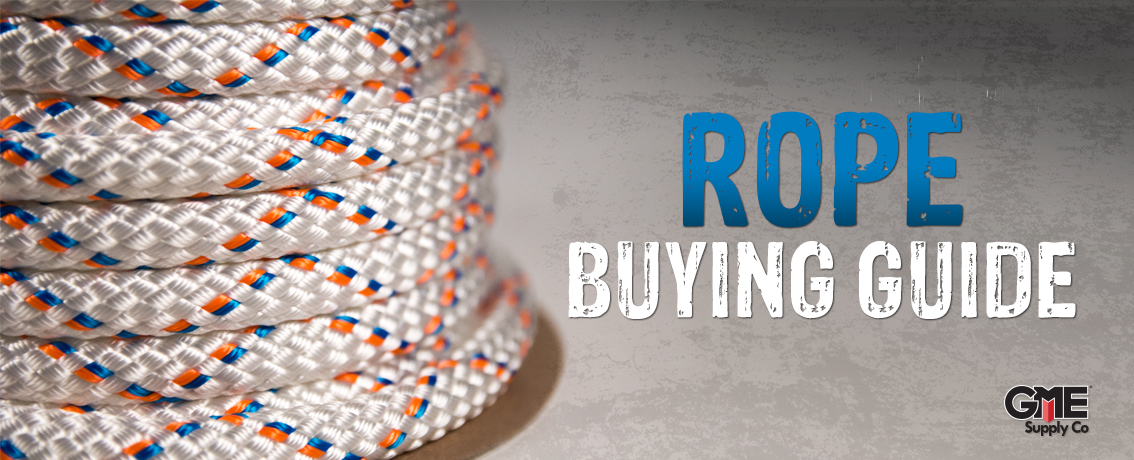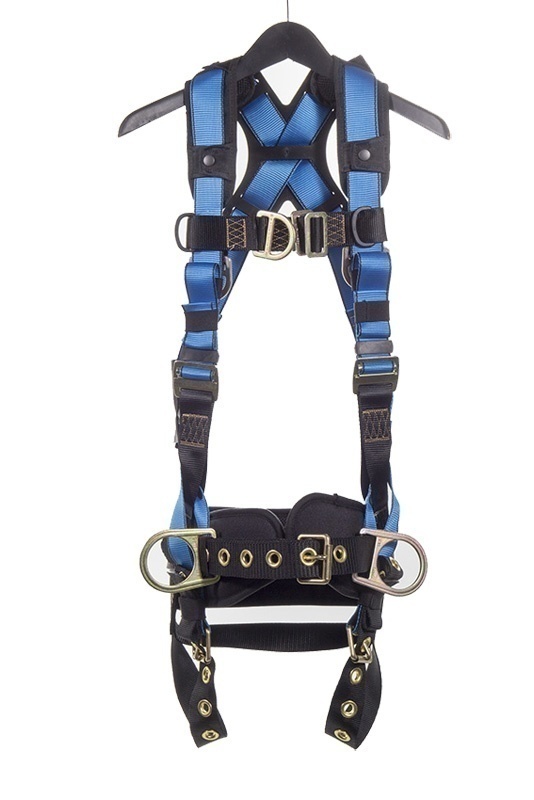Rope Buying Guide
 When working in at-height industries your rope is literally your lifeline. Finding the perfect rope is something that most climbers take to heart. Here at GME Supply, we specialize in helping you make an informed decision and in this week’s blog post our Gear Experts® have put together a guide to help you buy the perfect rope.
When working in at-height industries your rope is literally your lifeline. Finding the perfect rope is something that most climbers take to heart. Here at GME Supply, we specialize in helping you make an informed decision and in this week’s blog post our Gear Experts® have put together a guide to help you buy the perfect rope.
Construction
When looking at the kind of rope you are going to need to get the job done it’s good to make sure that you know the differences between the 3 types of rope you will most commonly see. Those 3 types are Kernmantle, 3-Strand, and Double Braid Rope.
Kernmantle
Kernmantle rope consists of twisted parallel fibers (the kern) surrounded by a tightly braided sheath (the mantle). The core fibers provide the majority (about 70%) of the rope’s strength. The sheath is tightly braided providing significantly higher abrasion resistance. There are two distinct types of kernmantle: dynamic and static. Dynamic is used for recreational climbing due to its high shock absorption capabilities. Static kernmantle has very low stretch and works well for industrial applications. Due to its construction, it remains round through descent devices and allows minimal twist on the rope. The properties of static kernmantle make it ideal for use as a lifeline or descent line.3-Strand
3-Strand ropes are an inexpensive rope option. They tend to have a lower breaking strength than double braid or kernmantle, so a larger diameter must be used to achieve the same strength. Due to their construction, 3-Strand ropes tend to rotate under loads and provide less abrasion resistance. These characteristics make it a poor load line. With regard to safety and working at height, 3-Strand is most commonly used as a lifeline due to compliance with OSHA requirements and compatibility with 5/8-inch rope grabs.Double Braid
Double braided rope is a braided core surrounded by a braided sheath. The inner and outer braids are generally designed to share the load equally with very low elongation. Double braid rope remains round under tension, imparts no rotational force when loaded, and has a soft hand. These characteristics make it ideal for use as a load rope.Diameter
The thicker a rope gets, the stronger it gets. But, there is a misconception that to be as safe as possible you should get the thickest rope available. In reality, your rigging is only as strong as your weakest component. The capstan, shackles, slings, blocks, and rope all must be considered. For example, if you’re using a 1,000-pound capstan hoist, most ½†double braid ropes have a MBS (Minimum Breaking Strength) high enough to safely handle the maximum load for the hoist; even with the safety factor, and loss of strength due to knots, termination plates, or sewn eyes. While a 5/8†rope has a higher breaking strength, it would not matter since the hoist is only capable of lifting 1,000 pounds. Another thing to consider is the sheave diameter of the block being used. There are many options which can handle ½†synthetic rope, but few exist that are strong enough to justify 5/8†rope.
Inspection
Each time you use your rope, you should perform a visual inspection to ensure it’s safe to use. Check for cuts, nicks, burns, excess fraying, flat or uneven spots, glossing, discoloration from sun exposure or chemicals, or inconsistencies in the rope. Refer to the manufacturer's recommendations for complete inspection and usage instructions. When inspecting your rope, it is much easier to keep track of your inspections with a Rope Inspection Log. Some manufacturers provide logs with their rope, but if your rope doesn’t come with one, or if you lost it, click here to download one for free from our knowledge base. **The content of this blog is not intended to replace proper, in-depth training. Manufacturer’s instructions must also be followed and reviewed before any equipment is used. →Click here to check out our Rope 101 blog post. →Click here to check out our Rope 101 Knowledge Base PDF. →Click here to see our full selection of Rope. →Click here to download our free Rope Inspection Guide.
Pelican Static Kernmantle Rope
Get Social
Be sure to follow us on social media to keep up with everything GME Supply has going on.
Facebook | Instagram | YouTube | Twitter | LinkedIn

We’re Also on Snapchat
Simply snap or screenshot this image ↓ to follow GME Supply!













